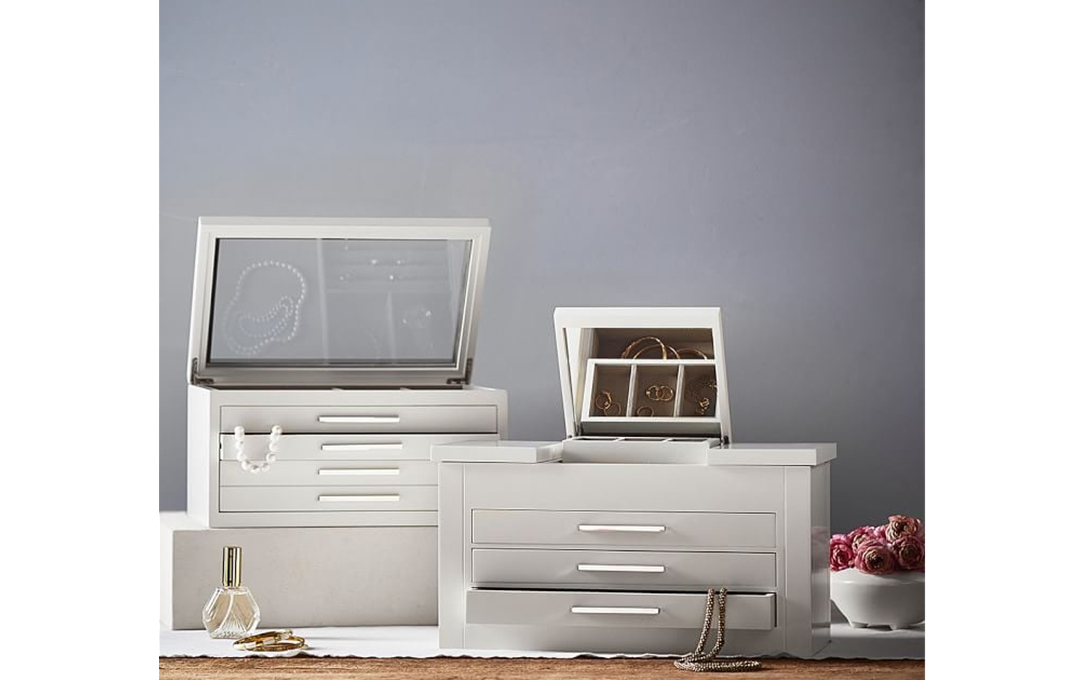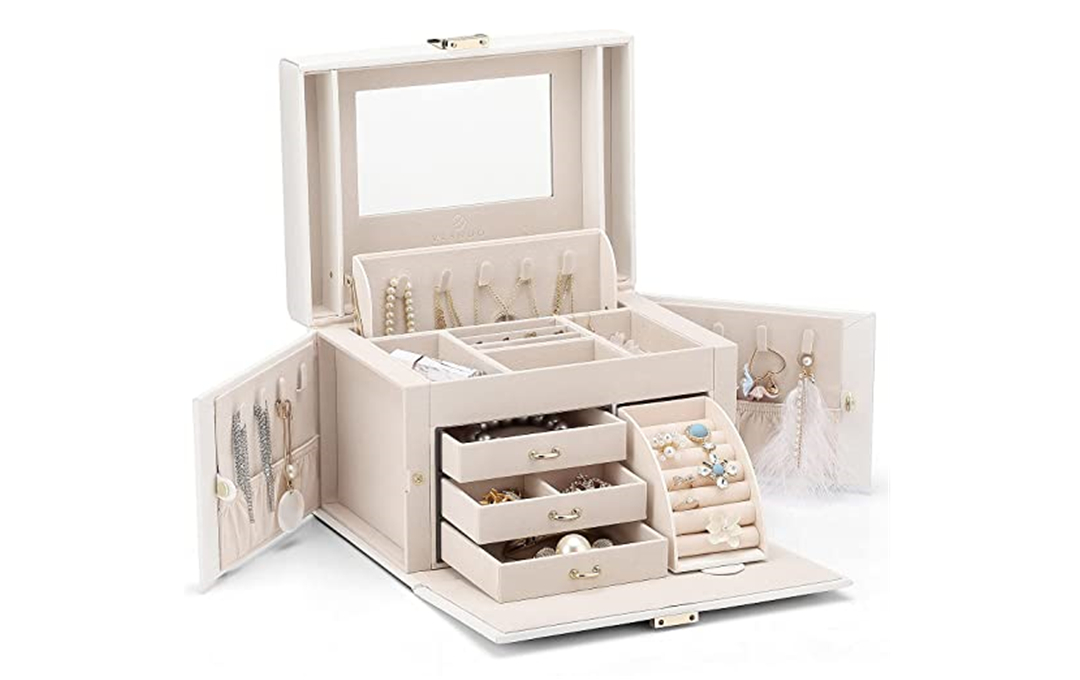A piece of furniture made to store and display jewelry in. This can include necklaces, bracelets, earrings, rings , etc.
Origin: The earliest known armoires date from the 16th century during the French Renaissance period. They were called “gardes-robes” which means wardrobe doors .
The earliest known armoires date from the 16th century during the French Renaissance period. They were called ” gardes – robes” which means wardrobe door s . These armoires were typically made of oak or walnut wood with hand carving and were decorated with chiseled metal work.
The jewelry armoire has evolved quite a bit since its inception. These days , they are made from various types of metal, veneer, plastic, etc., are usually flat pack to reduce cost for shipping, require assembly upon arrival , and come in all different shapes and sizes depending on the style desired .
 One example of a modern day jewelry cabinet is the “Citrine Jewelry Armoire Mirror” which is available for purchase here . It includes eight small drawers that can be used for rings, stud earrings, bracelets, necklaces ,etc. The top opens up to reveal two large storage areas that can be used for bulkier pieces such as necklaces. The top section also has a trifold mirror, which is quite convenient for putting on earrings or bracelets to ensure they both fit well and look symmetrical . An example of the price range of these types of armoires is from $113-129 , depending on shipping costs and whether or not a coupon code is used.
The main downside to jewelry armoires are their size. Depending on where it will be placed, you might have trouble finding the right spot that can fit your piece of furniture . Some may be bulky or simply too large for some people’s taste , but there are plenty of smaller alternatives out there if this is an issue .
One example of a modern day jewelry cabinet is the “Citrine Jewelry Armoire Mirror” which is available for purchase here . It includes eight small drawers that can be used for rings, stud earrings, bracelets, necklaces ,etc. The top opens up to reveal two large storage areas that can be used for bulkier pieces such as necklaces. The top section also has a trifold mirror, which is quite convenient for putting on earrings or bracelets to ensure they both fit well and look symmetrical . An example of the price range of these types of armoires is from $113-129 , depending on shipping costs and whether or not a coupon code is used.
The main downside to jewelry armoires are their size. Depending on where it will be placed, you might have trouble finding the right spot that can fit your piece of furniture . Some may be bulky or simply too large for some people’s taste , but there are plenty of smaller alternatives out there if this is an issue .
 One example of a modern day jewelry cabinet is the “Citrine Jewelry Armoire Mirror” which is available for purchase here . It includes eight small drawers that can be used for rings, stud earrings, bracelets, necklaces ,etc. The top opens up to reveal two large storage areas that can be used for bulkier pieces such as necklaces. The top section also has a trifold mirror, which is quite convenient for putting on earrings or bracelets to ensure they both fit well and look symmetrical . An example of the price range of these types of armoires is from $113-129 , depending on shipping costs and whether or not a coupon code is used.
The main downside to jewelry armoires are their size. Depending on where it will be placed, you might have trouble finding the right spot that can fit your piece of furniture . Some may be bulky or simply too large for some people’s taste , but there are plenty of smaller alternatives out there if this is an issue .
One example of a modern day jewelry cabinet is the “Citrine Jewelry Armoire Mirror” which is available for purchase here . It includes eight small drawers that can be used for rings, stud earrings, bracelets, necklaces ,etc. The top opens up to reveal two large storage areas that can be used for bulkier pieces such as necklaces. The top section also has a trifold mirror, which is quite convenient for putting on earrings or bracelets to ensure they both fit well and look symmetrical . An example of the price range of these types of armoires is from $113-129 , depending on shipping costs and whether or not a coupon code is used.
The main downside to jewelry armoires are their size. Depending on where it will be placed, you might have trouble finding the right spot that can fit your piece of furniture . Some may be bulky or simply too large for some people’s taste , but there are plenty of smaller alternatives out there if this is an issue . 
